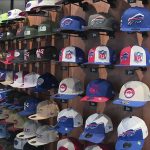Social Media has certainly had an impact on nearly every facet of business, and companies continue to expand their brand presence online. New online social communities, purchasing opportunities, customer reviews, and shopper incentives are introduced every day as a means of bringing the consumer closer to a brand. The fastest growing Web feature on the business horizon is using online videos as a communications tool.
According to Nielson Online, 117 million Americans spent almost 3 ½ hours each watching online videos in April. Certainly, much of that was entertainment content, but more so than ever, outdoor enthusiasts are getting valuable product information by watching online videos instead of reading websites and tedious owners manuals.
Brands like Garmin, Polar, Merrell, Atlas, Kelty and Buff are responding by adding significant video components to their marketing efforts. For complicated electronics like GPS and heart rate monitors, online videos have been a huge hit. Jeff Padovan, president of Polar Americas, explains, “We created the video content to answer a simple question, How do you talk to consumers about heart rate monitors in a language they understand? The product requires that we explain what it is and how it works. A picture cant do that for you.”
Polar has launched a brand-specific channel on YouTube to help consumers understand what the Polar products are and how to use them. “Tutorials use the latest technology to communicate how to set these products up,” Padovan says. “We are doing our best to use all the technology available to us in the digital space – and make it easy as possible.”
Jake Jacobson, senior media relations specialist at Garmin International, adds, “Our Forerunner 405 has a touch sensitive bezel that was a lot easier to see in action than to read about. We would find that an owners manual – no matter how well it was written – fell short in explaining how to use that feature. Once people saw it in person, the light went on for them and it became simple to use.”
The first video Garmin produced has now been viewed 250,000 times. In response, Garmin has created more than two dozen-product specific videos that provide very specific product feature tutorials. “ the videos address customers who are looking for information before the purchase,” Jacobson adds, “ [including] questions they have about after the purchase and present key selling points they need to know about.”
When Werner Paddles launched a new website last year, video channels were added to support retailers as well as consumers. “We hear from our dealers that you have a lot of SKUs and your product line is complex,” reports Werner marketing manager Jim Miller. “We initially started using video to educate our retailers about our products.” Short video clips from Werner explain blade shapes, paddling styles and shaft configurations. Werner offers four video channels promoting sponsored athletes, product videos, paddling tips and testimonials.
When posted on YouTube or other online video sharing platforms, online videos can easily be spread virally interested shoppers can send the link to friends or embed the videos in their own personal blogs, Facebook or Myspace pages and other websites, allowing brand and product information to be transferred with a personal recommendation and without any effort from the company. These online video sharing platforms also make it easier for retailers to use vendor-produced videos in their own marketing efforts.
Graham Gephart, marketing manager for K2 Winter Outdoor Atlas Snow-Shoe Co. suggests that companies need to spread content to as many points as possible to get that viral saturation. “You want to cast a net to attract consumers,” he says. “If information about Atlas is only available in one place online, theres only one place consumers can stumble across it. For us, online video was about adding another point of contact with the consumer.”
Like many outdoor and sporting goods brands with technical equipment, communicating key features can be difficult when using written explanation. Gephart also sees upside for companies that need to disseminate information about technical features. “Weve put a lot of emphasis on binding design and development as one of the distinguishing features of Atlas products,” he explains. “We wanted to show that in a better way than just a technical illustration on a hang tag.”
Produced in-house, the Atlas videos describe the brands design philosophy, how they work and how to use them. As viewership of the videos increased, Gephart says the number of customer service calls asking these types of questions decreased.
Brands with unique personalities and products have used video to fuel their success. Buff Headwear has used online videos for a decade. Shirley Choi Brunetti, vice president and general manager of Buff, Inc. suggests that products like Buff are ideal for live demonstrations or videos. “The goal is to educate as well as to widen our audience,” she says. “Todays technology allows us to deliver quality material faster and more cost effectively.”
Demonstrating and explaining product features and benefits is one of the most important advantages of using online video, but creating an emotional connection with customers is another beneficial outcome.
Pale Morning Media has helped Kelty create video content. Drew Simmons, president of Pale Morning, comments, “For a lot of people, buying is a rational decision. But in many cases, it's [also] an emotional one. Having the ability to bring a product to life, literally, greatly grows your chances of making an emotional connection.”
Jacobson says retailers are using YouTube on their websites to add video content for a variety of topics. In addition to attracting and holding visitors interest, retailers are using the videos as training tools for staff and consumers. He suggests that retailers have truly embraced Garmin videos. “Retailers dont have to try to educate the consumers themselves,” he explains. “They can click on a video and in 90 seconds you can see how to customize your Forerunner 405. Ease of use is one of our key selling points. If consumers see we are willing to explain something to them in a way that they can access anytime, they are going to feel better about us.”










